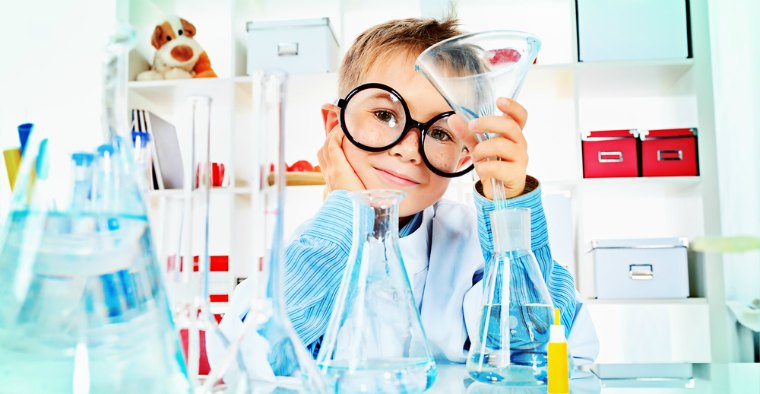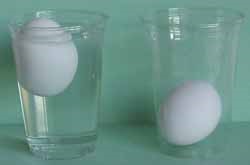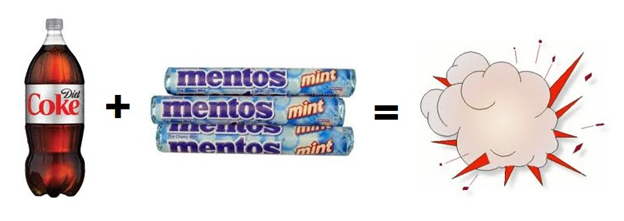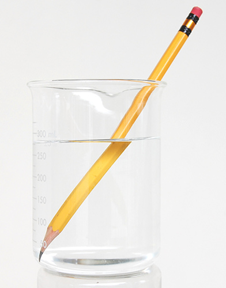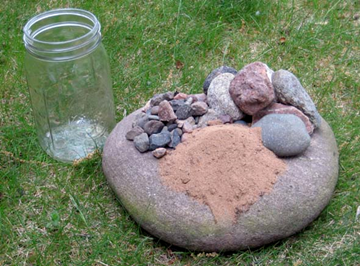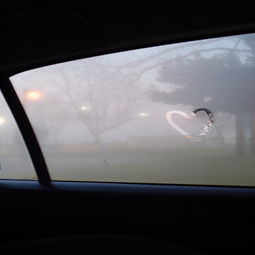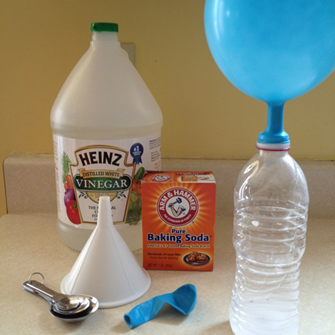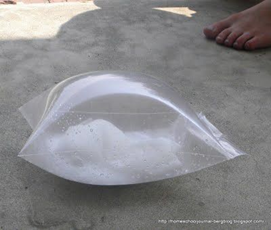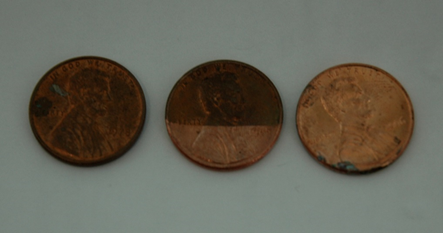10 Awesome Science Experiments for Kids
Let your child’s alter ‘mad scientist’ ego come out with these simple science experiments for kids. You don’t have to look far for the building blocks of these cool activities. From making eggs float to self inflating balloons, these may just trigger your child’s interest in Science.
Make eggs float!
Did you know that ordinary eggs sink in water? But you can make them float using some simple science! You’ll need a tall drinking glass or vase, an egg, water, and about six tablespoons of table salt. Here’s what you do: first, add water to the drinking glass or vase until it is about ¾ full. Then drop your egg in the water and watch it sink to the bottom! Just as we predicted! Now, remove the egg and add the table salt to the water. Drop the same egg into the salted water and watch what happens: it floats! The salt makes the water dense and therefore objects are float more easily!
Make Diet Coke Explode!
Turn your bathtub into a volcano with some soda and candy! Grab yourself a 2 litre bottle of Diet Coke – yes, it has to be Diet Coke! And while you’re at the grocer picking up your Diet Coke, grab a package of Mentos drop candy. You can do this experiment outside, but the bathtub also works well to contain the giant soda explosion. Here’s what you do: open the bottle of Diet Coke and as fast as you can drop in all the Mentos candy and run! The chemical reaction that ensues will create a shooting steam of soda high in the air! On second thought, you better do this science experiment outside!
Add a little electricity to your life!
Ever been to a birthday party and someone rubbed a balloon on your head? They were trying to create static electricity: by rubbing a balloon on your head creates positive electron energy and this creates a static electricity situation. Over time the electrons become negatively charged again and the static electricity will diminish, but for a few brief moments you might be able to see your hair stand on its ends! Simply rub the balloon on your hair and watch what happens! You might even get “a shock” when you touch the balloon afterwards!
Bend a pencil!
This is a fun experiment that plays on the eyesight. Grab a clear plastic cup, fill it nearly to the top with some water. Now, find a pencil and drop the pencil into the cup. Make sure part of the pencil sticks out of the water. Now, crouch down so you can see the pencil from the side of the cup. You should be able to see that the pencil appears to be cut in two pieces. This is because of the way light travels through water: your pencil is fine! It just looks broken!
Empty vs. Full
This is a fun little experiment about filling up space. You’ll need a large clear container, some large balls or rocks, small pebbles or marbles, sand and water. Start by putting all of the large balls or rocks in the container…is it full? Now drop in your pebbles or marbles…is it full now? There is still some space left isn’t there? Now pour in the sand and your container should look full, right? Wrong. Now pour in water until you can’t pour anymore into the container. NOW! It’s full! This experiment shows us that full is not always “full”!
Steaming up a window
Ever wonder why the windows in your house get steamed up so you can’t see out? Try doing this experiment to understand why that happens. Stand in front of a mirror or window. Breathe heavily on the mirror or window and watch your breath turn into fog: the heat from your breath is carrying wet moisture and against the cold glass or mirror it is causing steam to be created. This process causes the window or mirror to “get fogged up.” It is also why your car windows get foggy: the heat given off from your body fogs up the cold windows against the outside elements.
Lighter than water
For this experiment, you’ll need a clear plastic container, water, and some oil – cooking oil will do. Pour the water into the plastic container. Now, pour the oil into the container. Wait a few minutes: the oil will rise to the top of the water and appear to float on it. Then, put the container in the freezer. Wait several hours. When you check it again, the water will be frozen at the top and the oil will be at the bottom of the container! This is because when water freezes it becomes lighter than the oil and moves to the top of the container. Pretty cool, huh?
Self-inflating balloon
This is fun experiment: you’ll need an empty bottle, a balloon, ½ cup of white vinegar, and some baking soda. Pour the vinegar into the bottle. Put some baking soda in your balloon. Carefully attach your balloon to the mouth of the bottle without spilling any baking soda into the bottle. When you’re ready, carefully lift the balloon so the baking soda empties from the balloon into your bottle. The reaction between the vinegar and the baking soda will cause gas to build up in the bottle and as a result, the balloon attached to the top will inflate!
Exploding lunch!
Here’s one for outdoors: you’ll need a plastic sandwich bag, vinegar, baking soda, a piece of tissue paper and some warm water. Put ¼ cup warm water in the plastic sandwich bag. Add ½ cup vinegar to the bag. Add 3 tablespoons of baking soda to the tissue and wrap the tissue up so that it creates a little packet. Acting quickly, close half the sandwich bag and toss in the tissue paper with baking soda inside. Close the bag as quickly as possible and put it down. The chemical reaction will cause the bag to fill with gas and the bag will expand until it finally pops! Watch out: best to keep your distance!
Clean your pennies with vinegar
This little experiment is pretty simple but interesting, nonetheless. Add ¼ cup of white vinegar to a plastic bowl. Don’t use a metal bowl! Add a few shakes of salt to the bowl and stir the vinegar and salt together. Drop in a few dirty pennies and wait a few seconds. Take out the pennies and rinse them in some warm water. They should be as shiny as new pennies! The sale and vinegar reacts with the copper oxide that builds up on pennies and removes it! Pretty fancy science happening with those little pennies!

